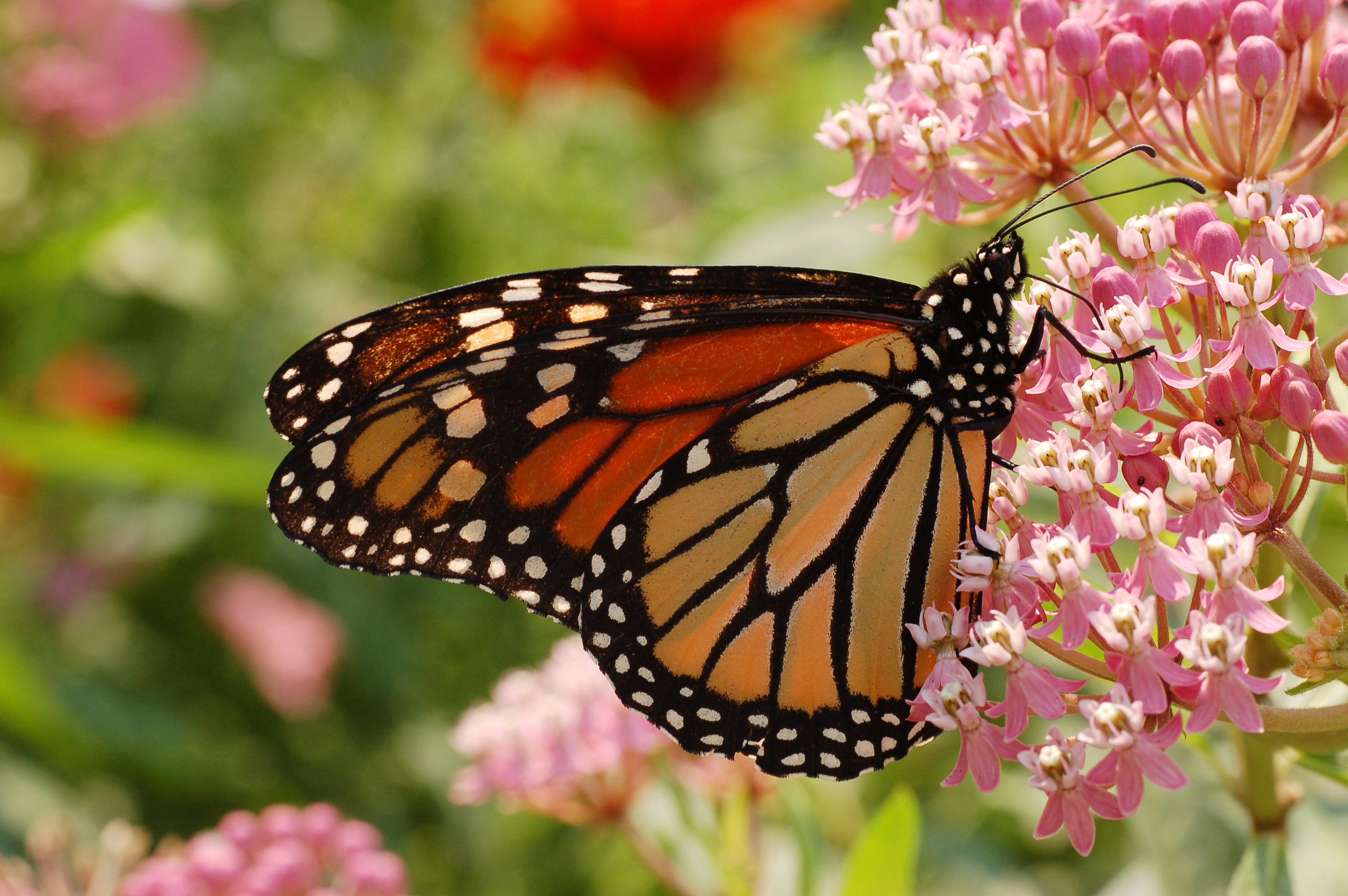By Elisabeth Malkin, The New York Times, February 14, 2014
 |
| A monarch butterfly on a milkweed plant |
MEXICO CITY — Hoping to focus attention on the plight of the monarch butterfly at a North American summit meeting next week, a group of prominent scientists and writers urged the leaders of Mexico, the United States and Canada to commit to restoring the habitat that supports the insect’s extraordinary migration across the continent.
Calling the situation facing the butterfly “grim,” the group issued a letter that outlined a proposal to plant milkweed, the monarch caterpillar’s only food source, along its migratory route in Canada and the United States.
Milkweed has been disappearing from American fields over the past decade as farmers have switched to genetically modified corn and soybeans that are resistant to the herbicide glyphosate that kills other plants. At the same time, subsidies to produce corn for ethanol have increased, expanding the amount of land planted with corn by an estimated 25 percent since 2007.
“We can’t ask farmers to change their habits,” said Homero Aridjis, the Mexican poet who wrote the letter, which was to be released on Friday.
Instead, the proposal encouraged planting milkweed on roadsides and between fields, and suggested subsidies for farmers to set aside land that is free of herbicides.
“This is a viable proposal. It is not impossible,” said Mr. Aridjis, who signed the letter with Gary Paul Nabhan, a conservationist and writer at the University of Arizona. “Otherwise, we face an ecological genocide, because if we take away the monarch’s plants we kill the monarchs.”
On Wednesday, President Obama is scheduled to meet President Enrique Peña Nieto of Mexico and Prime Minister Stephen Harper of Canada in the Mexican city of Toluca, about an hour’s drive from the volcanic mountains where the butterflies winter after flying thousands of miles.
This winter, the area that the butterflies cover dropped sharply, to 1.65 acres, the smallest ever. In 1996, the butterflies covered 45 acres across the oyamel fir forests, where they form giant fluttering colonies.
The Mexican government has proved successful over the past five years at halting most of the large-scale illegal logging that was long seen as the biggest threat to the monarch. But smaller logging continues.
“As Mexico is addressing the logging issues, so now must the United States and Canada address the effects of our current agricultural policies,” the letter said.
About 20 leading butterfly specialists signed the letter, along with conservationists, writers, artists and filmmakers from Mexico, the United States and Canada.
No comments:
Post a Comment